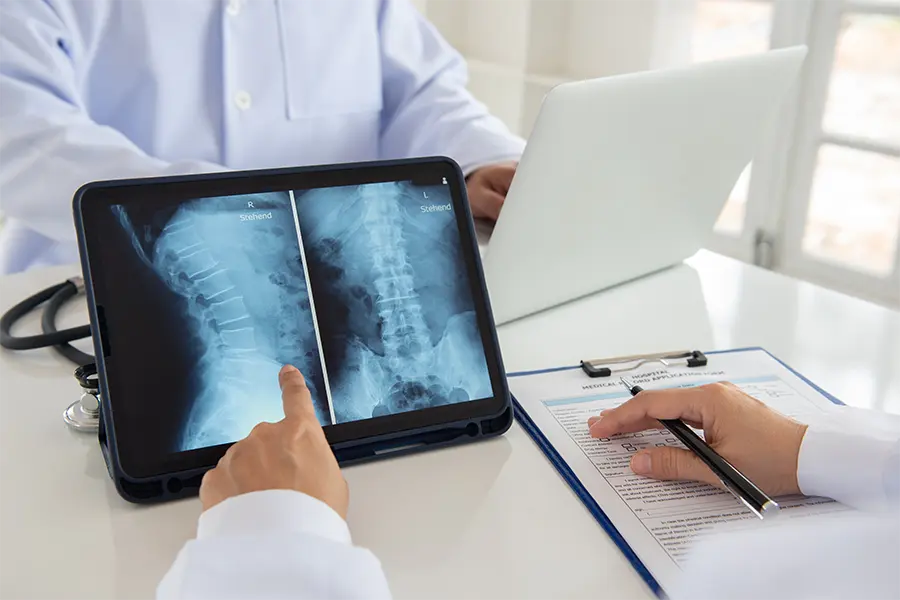
What Role Do X-Rays Play In Diagnosing Spinal Conditions?
There is not a day that goes by that our spine specialists don’t view multiple x-rays on every patient, and often find ourselves explaining the importance of x-rays to our patients. So what’s the deal? Why are orthopedists so focused on the x-rays? The answers are simple! Here’s what you need to know:
Why Are X-Rays an Important Tool in Diagnosing Spinal Conditions?
The proper x-rays are absolutely essential in diagnosing spine disorders and developing the proper treatments for those disorders. As part of routine imaging, proper x-rays should be done in the standing position. There are several different views available, include front-to-back, side, bending forwards and backwards, among others. Each view shows something different and your physician will determine which views are best in your particular case. The technique performed during the filming process is quite precise with many nuances, and therefore best done by a radiology technician specifically trained in taking spine x-rays.
What Should I Do With My Old X-Rays?
At VSI all of our patients have x-rays on file, which we refer back to during each visit. Our policy is to keep x-rays current, looking for any changes over time. Not only is this a best practice, but also helps with assessing healing after surgery and planning for the future. Multiple data points are best to predict the future and guide treatments depending on symptoms.
How Many X-Rays Can I Expect During My First Visit?
As treatments become more complex, perhaps involving surgery, our surgical team is dedicated to understanding the alignment of the entire spine. Spinal alignment can be assessed in several ways, and we strive to right size the amount of diagnostic testing to minimize the radiation exposure for the patient.
Often a full length x-ray including each section of the spine (cervical, thoracic, lumbar, sacrum/pelvis) is needed to understand the global picture. Rather than treating one focused area or body part, we treat the entire person as a whole. For patients with spinal deformities, standing, laying, and bending x-rays help determine the flexibility of the spine and precise measurements are made to make specific calculations that are used during surgery. This “whole body” approach is part of what makes the surgeons at VSI so successful at treating spinal conditions; from routine to complex disorders.
Why Isn’t an MRI Enough to Make the Diagnosis?
Most routine spine MRIs (magnetic resonance imaging) are done in the lying position, with a focus on the soft tissue structures, such as discs, ligaments, muscles, nerves, and the spinal cord. Although MRIs are extremely helpful and a necessary part of completing the diagnosis, these high resolution tests give very little information on the bony anatomy, such as the vertebrae, facet joints, SI joints, spinous processes, and transverse processes. As for the spinal alignment, an MRI done laying flat on the back is absolutely ineffective at providing the necessary information needed to assess spinal alignment or for understanding spinal instability.
Is it Common for a Doctor to Overlook a Diagnosis When Viewing an X-Ray?
If the x-rays are not done properly, or done with poor technique, common findings can be missed. Spondylolisthesis, or slipping of the spine, is a common condition that in the early phases is often only seen when an x-ray is taken upright while bending. These patients can have symptoms for years but are told they have a normal spine.
When you come to VSI you can trust in us that we are aware of minimizing radiation exposure, and will only do as many x-rays as needed to make the diagnosis, track certain treatments, and provide proper surveillance. We prefer you have them in our facility as we can ensure they will be taken with the latest technology, by a spine trained technician, including the most appropriate views, with the ability to make all necessary measurements. What a wealth of information we get in a few short minutes!
Topics covered
About the Author
Featured Resources
Insights to Achieve a Pain-Free Life



